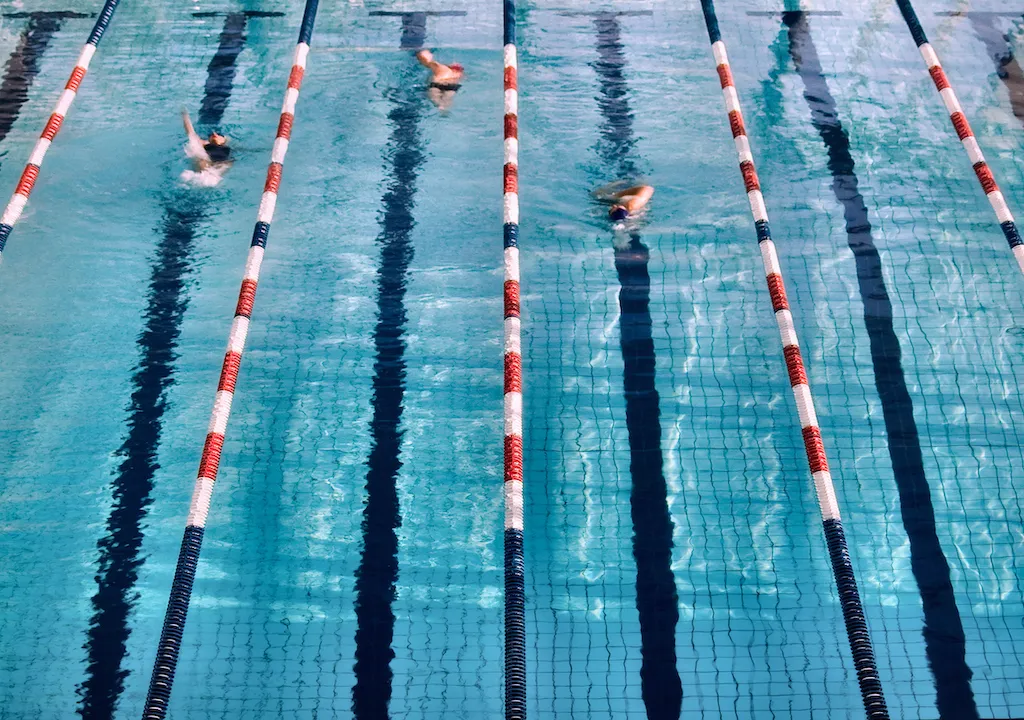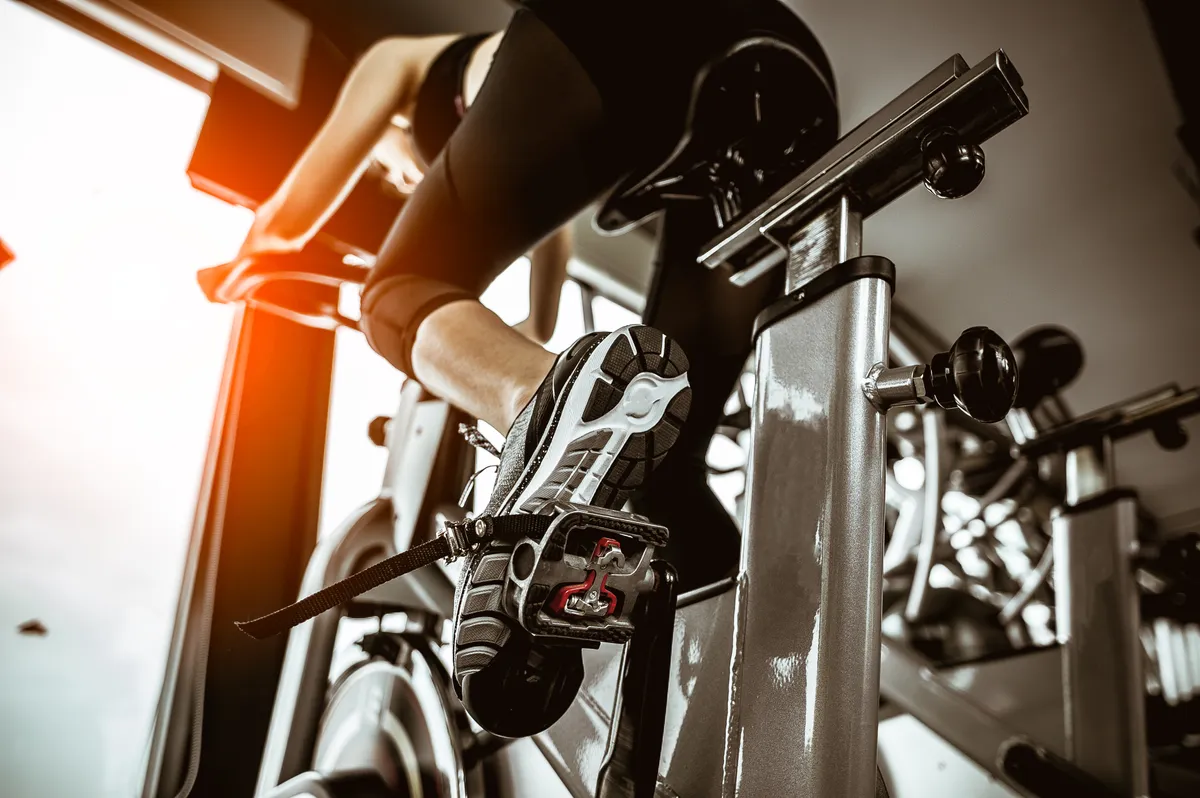Time – there just doesn’t seem to be enough of it! Since we can’t magically make more, we need to use what we’ve got wisely so that we fit in what we need to without burning ourselves out.
For some of you, using the lunchtime break or commute could be an effective way to free up time. But here’s the million-pound question: Can you actually train for a triathlon during your lunch break? Well, it depends – let me explain.
The answer comes down to a number of factors, so think about what race you’re prepping for, how well conditioned you already are, and what your performance goals are.
Lunchtime workouts can keep you in decent shape, get you set for a shorter race, and complement those longer weekend sessions.
However, if you’ve got your eyes on an Ironman and your only slot is lunchtime, sorry, but it’s probably not going to cut it.
Then there’s the logistics – how long’s your lunch break (or commute)? Are there safe and clear routes for a good session? Do you have gym access? And can you shower after? If the answer’s no, then your popularity in the office may deteriorate quicker than Jonny Brownlee in the Mexican sun!
If you’ve weighed up all these factors and reckon lunchtime training could be for you, read on for some engaging session ideas.
They’re all about making the most of your time, staying creative with your training and keeping you engaged, so each has an adaptable framework and suggestions for how to progress. Ready? Let’s dive in!
10 key lunchtime sessions for tri
From running up and down stairs to doing some stretching in a vacant meeting room, there’s a wealth of tri-training opportunities in a 30min-1hr lunch break. Here are the sessions…
1. The building run
By breaking the build sections up into different lengths and by varying the intensity of segments, you can effectively target multiple aspects of your overall fitness.
This approach is particularly well-suited for a lunchtime workout, as the initial build-up can double as a warm-up.
Here’s a simple framework: divide your available time into three parts (½, 1/3, and 1/6). E.g. in a 30min session, allocate 15mins, 10mins, and 5mins to each section. Progress from an easy pace to moderate intensity through each segment, then move to the next without breaks.
To make it more race specific, adjust the intensity shift (e.g. from easy to very hard) or shorten the build section (e.g. 6 x 5mins or 10 x 3mins).
2. Weaponise your commute

If your workplace allows, incorporating your commute into your training routine provides additional opportunities beyond the lunch break. While specific structures may vary, here are some suggestions to try:
Overgear ride – Enhance strength by riding in a harder gear than usual. Ensure a proper bike fit and watch out for any discomfort in your knees.
Sprint from the lights – Work on power by sprinting from a stationary position. Allow at least 3mins between sprints for quality, or alternatively reduce recovery and add more efforts for muscular endurance training.
Easy in, hard back – Start your workday commute at an easy pace, keeping it aerobic or no more than a 6/10 effort. On the way home, aim for your fastest time (please stay safe in the traffic!).
Set structure – If you have a clear section of road or path, break the journey up with time-of-year appropriate reps specific to your training and racing needs. Remember only about 20% of your total running or riding needs to be high intensity, so do this occasionally not every day.
3. Swim sprints

As the least time-efficient element of tri training, an effective lunchtime swim will need to offer as much bang-for-your-buck as possible.
Many triathletes overlook the speed element that pure swimmers often incorporate but given that this type of training is about effort rather than volume, it’s an ideal choice for a busy day.
After a brief drill/swim warm-up, include 6-8 maximum speed efforts over 10m-25m, with at least 3mins of easy drill work for recovery. Efforts should be very hard, but the overall session shouldn’t be too fatiguing.
4. Lunchtime bootcamp
The surge in outdoor bootcamp-style classes during Covid has made them an excellent option for lunchtime multisport-specific conditioning.
Incorporate squats and lunges for cycling, hinging movements (e.g., deadlifts or arabesques) and skipping for running, press-ups and dips for swim conditioning alongside core work with some flexibility at the end.
Run the session as a circuit with periods of work and rest to suit the group, using stretchy bands to accommodate different fitness levels. Turn up the tunes and encourage colleagues to join to make it a fun and social session.
5. Stair run
For those with access to a tall office building, stair running offers a novel training and conditioning opportunity.
Stair work complements bike and run training, is good cardiovascular and muscular conditioning as well as a good option for cold winter days.
Start at the bottom, walking or running up one flight, before returning to the ground floor. Repeat, ascending two then three flights (etc), and continue until you reach the top.
Then pyramid back down (3, 2, 1) or restart from the beginning. Opt for a faster single-step movement for cardio development or a slower double-step pattern for muscular engagement. Calf, glutes and quads should all get a good burn by the end.
6. HIIT cycle

Cycling on a static bike is one of the most time-efficient training methods. Whether you have an hour or less, you can achieve well-rounded fitness with either high-intensity interval training (HIIT) or supramaximal interval training (SIT) sessions.
HIIT involves intervals of 30secs up to 8mins at around 85-90% of your maximum effort. Try 4 x 3mins on/3mins easy to improve your ability to utilise oxygen.
If you’re younger and/or highly conditioned, consider SIT with 4-6 x 30secs all-out efforts and 2-5mins of recovery between each. Ensure these are maximal efforts, but stop if you experience excessive fatigue or discomfort.
7. Broken endurance day
Frequency is a great way to achieve volume as it means more points of stimulus for the body to adapt from.
So rather than a longer session at the weekend you could have a bike or run day where you train in one sport to work, during lunch and on the way home, keeping all sessions strictly aerobic. This way the body is stimulated to adapt to just one sport three times in the same day.
8. Ruck

Despite concerns about knee or impact injuries, ‘rucking’ (walking or running with a specially designed weighted backpack or vest) can be a valuable inclusion in your training repertoire as long as you don’t add too much weight, maintain good form and are adequately conditioned.
When done correctly, it can simulate the form and physiological changes that occur in the latter part of longer endurance events. This makes it a time-efficient way for longer-course athletes to work on this aspect of performance.
Begin with no additional weight and gradually increase over time, prioritising good form throughout.
9. Yoga/flex
Do want to get active, improve recovery and performance but don’t want to get sweaty? Well lunchtime flexibility might be just the ticket.
Go to a class or follow a video in a free meeting room, it’s up to you, just grab your mat and get mobilising those tired joints.
10. Gym tri
If you have access to a gym, the lunch break provides an opportunity to train all three tri elements in a single session.
Ski-ergs serve as a suitable proxy for swimming as they engage chest, lat, and upper back muscles, as well as the core for stabilisation.
Transition seamlessly to a static bike and finish on the treadmill. Want to mix it up? Do it backwards or repeat ‘swim’, bike and run movements multiple times.
Top image credit: Steve Sayers
